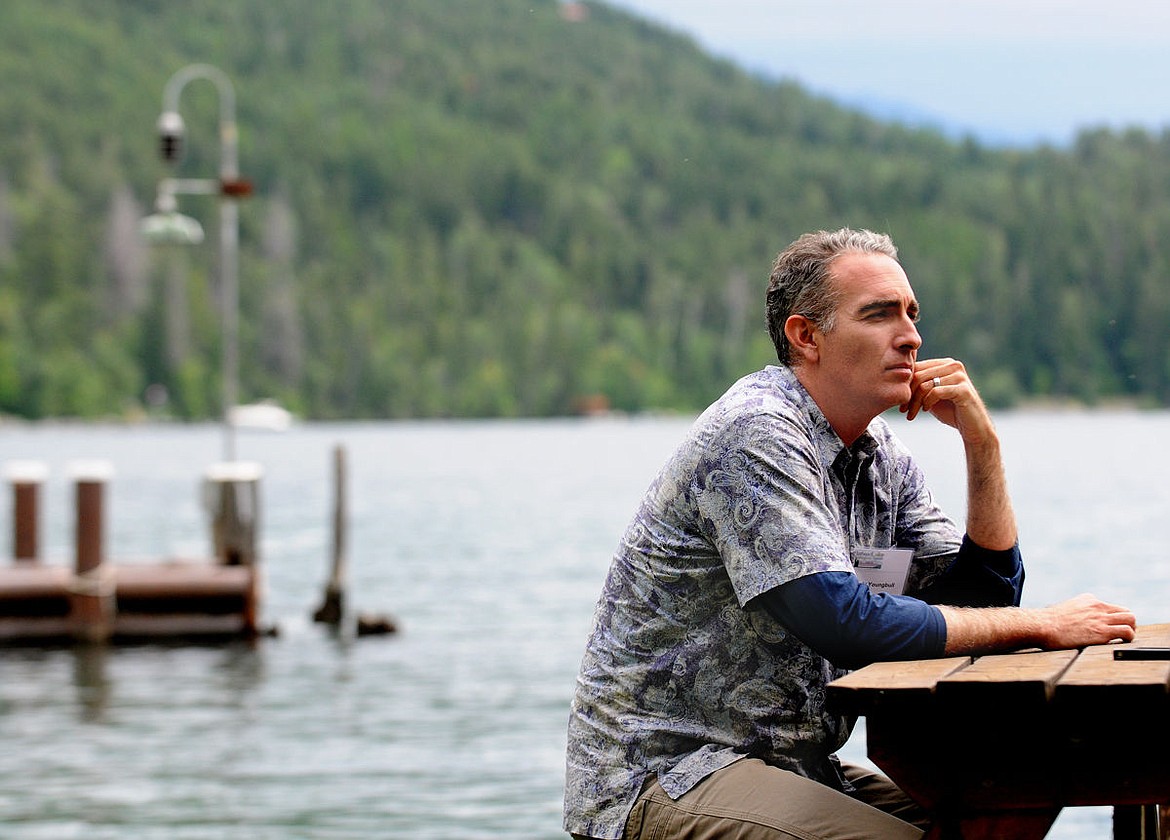Bio station aims to expand its reach
YELLOW BAY — Addressing a group of local visitors to the University of Montana’s Biological Station Wednesday afternoon, station director Jim Elser said he plans to turn the renowned facility into the “best freshwater biological station in the world.”
Elser officially took the helm from longtime director Jack Stanford in March. As the seventh director in the biological station’s 117-year history on Flathead Lake, Elser plans to expand its reach internationally by teaming up with other research facilities specializing in alpine limnology, or the study of freshwater environments.
“I want all roads to lead to Montana,” Elser said. “Roads from China, Patagonia, Switzerland and other mountain regions where other people have similar challenges. We want to be doing the best science possible so people will come here to learn from us and we can learn from them as well.”
However, he also made clear he intends to continue the university’s close relationship with Flathead Lake and the communities that depend on it, emphasizing not just the aesthetic appeal of the lake, but its economic impact as well.
Citing the work of University of Montana economists, Elser said the lake’s famous clarity has an estimated $6 billion to $8 billion impact on shoreline property values, and said that nature-based ecotourism in Flathead and Lake counties is worth an estimated $1.6 billion to the local economy.
“All those aesthetics and emotions turn into real value when you talk about an economy that’s driven by nature-based tourism,” he said.
He also turned to dollars and cents to make the case for continued vigilance against aquatic invasive species. In Wisconsin’s Lake Mendota, he said, the arrival of spiny water fleas led to a spike in algae levels. After the water fleas began preying on the population of tiny crustaceans that normally keep algae in check, the water became greener and less clear, similar to the effect of the mysis shrimp introduction into Flathead Lake.
That “ecosystem service” no longer being provided by the algae-eaters would cost an estimated $80 million to $160 million to replicate by chemically treating the water upstream to regain clarity, he said, adding that Flathead Lake contributes billions of dollars in ecosystem services to the region.
“The condition of that lake is a reflection of our own decision-making and our own values,” he said.
Despite the challenges facing the region’s freshwater environment, Elser said he believes Northwest Montana is rife with opportunities to produce cutting-edge research.
He described his recent hike into Glacier National Park’s Sperry Basin, where a melting glacier is opening a window through which scientists can study ecological systems similar to those seen at the end of the Earth’s previous glacial period.
“This is the maternity ward of lakes, the newborn lakes that are coming into existence behind the retreating glaciers,” Elser said, pointing to a picture of a lake less than 50 years old. “No one really knows anything about the ecology of lakes at the end of the Pleistocene, but now we can sort of find out, because we have this unfortunate experiment going on with climate change.”
Reporter Sam Wilson can be reached at 758-4407 or by email at swilson@dailyinterlake.com.








